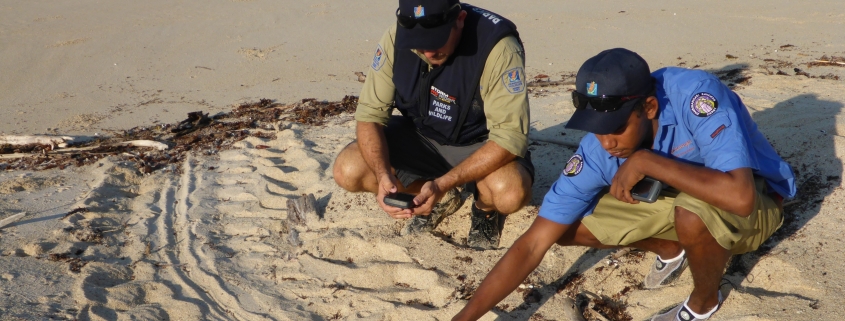Traditional knowledge verifies key turtle nesting sites
New research merging modern marine science with Traditional ecological knowledge has uncovered key nesting sites for turtles in Western Australia.
Western Australia’s remote Kimberley coastline spans multiple Traditional Owner estates and the findings will contribute towards future co-management plans to conserve turtle populations in the northwest, including continued monitoring for marine turtles.
Led by a team from WA’s Department of Biodiversity, Conservation and Attractions (DBCA), the study ranked marine turtle nesting sites in the region and found the islands off the Kimberley coast had higher nesting usage and fewer terrestrial predators.
Researchers used aerial surveys to assess marine turtle nesting distribution and abundance during summer and winter nesting seasons in Indigenous Protected Areas and newly declared Kimberley Marine Parks.
Images of nesting tracks were then quantified in the lab and Traditional ecological knowledge and ground-based surveys verified the harder-to-detect species (olive ridley or hawksbill turtles) with irregular nesting, low track persistence and non-aggregated nesting in the more remote areas.
The three highest density rookeries were found to be winter flatback turtles at Cape Domett, summer green turtles at the Lacepede Islands and summer flatback turtles at Eighty Mile Beach. Nesting by summer green turtles and winter flatback turtles occurred at a lower density in the North Kimberley offshore islands.
Lead researcher Dr Tony Tucker from DBCA said while the higher-density rookeries provided locations for long-term monitoring using repeated aerial or ground surveys, the sparse or infrequently nesting species required insights gleaned by Traditional ecological knowledge.
“Common and conspicuous nesters are easily detected and ranked, but better-informed co-management requires additional ground surveys or surveys timed with the reproductive peaks of rarer species,” Dr Tucker said.
Dean Mathews of the Indigenous Saltwater Advisory Group (ISWAG) and Dr Scott Whiting, leader of the WAMSI Marine Turtle Project agreed.
“Besides the mainland flatbacks, the collective cultural importance of green turtles to Kimberley Indigenous groups logically identifies the Lacepede Islands as an index rookery for summer green turtles,” Mr Matthews said.
Dr Whiting said the study demonstrated the importance of integrating traditional and western approaches to conserve and manage species populations, particularly in northwest Australia.
“Sharing information for the purpose of joint management is crucial for migratory marine megafauna that traverse multiple management jurisdictions,” Dr Whiting said.
“It’s expected these results will underpin future conservation efforts, including continued monitoring for endangered turtles.”
This research was carried out under WAMSI’s Kimberley Marine Research Program.

 Tony Tucker DBCA
Tony Tucker DBCA